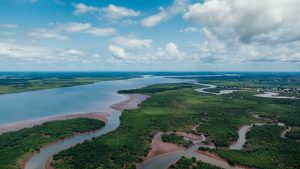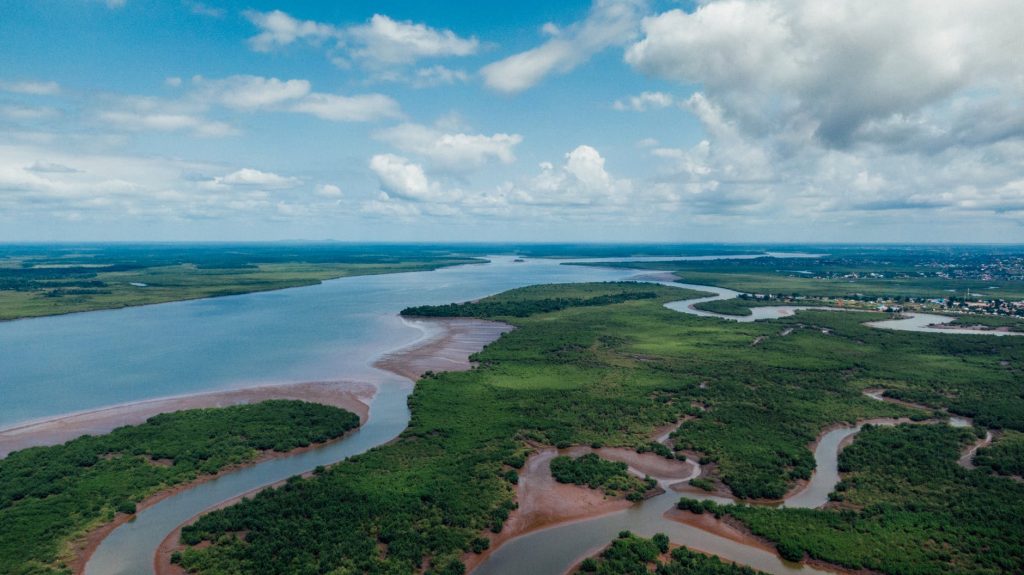Two lawsuits have been filed against the Environmental Protect Agency (“EPA”) over the agency’s handling of the Chesapeake Bay cleanup. The lawsuits, filed by states and citizens’ groups, claim that EPA has violated the Clean Water Act (“CWA”) by failing to enforce a decade-old plan created by the agency to restore the Chesapeake Bay to ecological health. The plan itself is a Total Maximum Daily Load (“TMDL”) that requires each state in the Chesapeake Bay watershed to take the necessary steps to reduce their share of nutrient and sediment pollution in the Bay by 2025. According to the plaintiffs in both lawsuits, Pennsylvania and New York have both failed to develop plans that will allow them to meet the pollutant-reduction goals, and EPA has failed to take any action against them. The plaintiffs have therefore filed lawsuits against EPA, accusing the agency of abdicating its responsibility by accepting inadequate cleanup plans.
Background on the Chesapeake Bay
The Chesapeake Bay is the largest estuary in the United States. Its watershed encompasses 64,000-square-miles over Delaware, Maryland, New York, Pennsylvania, Virginia, West Virginia, and the District of Columbia (“the Bay States”). For decades, pollution in the form of nutrients and sediments have entered the Chesapeake Bay from all over its watershed, leading to murky waters and algae blooms that lower the overall levels of sunlight and oxygen found in the Bay’s waters. Due to concern over the Bay’s ecological health, the Bay States entered into the Chesapeake Bay Agreement in 1983. The Agreement mandated the creation of the Chesapeake Bay Program, a collaborative effort between the Bay States to restore and protect the Bay.
In 1987, Congress amended the CWA to include Section 117 which granted financial support for the Chesapeake Bay Program. In 2000, Congress amended Section 117 to expand EPA’s duty to oversee the Chesapeake Bay Program. Under Section 117, EPA is required to “ensure that management plans are developed and implementation is begun by signatories to the Chesapeake Bay Agreement to achieve and maintain . . . the nutrient goals of the Chesapeake Bay Agreement for the quantity of nitrogen and phosphorous entering the Chesapeake Bay and its watershed.” 33 U.S.C. § 1267(g)(1)(A).
Under its authority to oversee the Chesapeake Bay Program, EPA acted in 2007 to begin developing a TMDL for the Chesapeake Bay watershed. The TMDL was finalized in 2010, setting goals for the reduction of nitrogen, phosphorus, and sediment that were to be met by 2025. A function of the CWA, TMDLs represent how much of pollutant can enter the waterbody while still meeting water quality standards that allow the waterbody to be fishable and swimmable. TMDLs operate by determining a pollution reduction target, and then designating load reductions for the sources of the targeted pollutant. TMDLs can include either narrative or numeric water quality criteria. Narrative water quality criteria usually describes the desired condition of a water body absent certain negative conditions. Numeric water quality criteria refers to the maximum pollutant concentration levels permitted in a water body. The Chesapeake Bay TMDL contains both types of criteria.
The Chesapeake Bay TMDL requires an overall reduction of nitrogen by 25 percent, phosphorus by 24 percent, and sediment by 20 percent with all pollution control measures being in place by 2025. To accomplish this goal, EPA directed each of the Bay States to develop a Water Implementation Plan (“WIP”) that would serve as a blueprint for how that states planned to implement the TMDL. The WIPs were developed in five steps, with the final step being EPA’s approval or disapproval of the plan. EPA would only approve WIPs that ensured all necessary pollution control practices were in place without requiring additional adjustment. The WIPs were submitted in three phases, with each successive WIP needing to implement stricter controls than the previous WIP.
During the Phase I and II WIPs, EPA had rejected plans that did not meet the necessary pollution control threshold and sent those plans back to their respective states with instructions for revisions. At the start of the Phase III WIP process, EPA informed the Bay States of the expectation that the Phase III WIP will ensure that pollution management practices would be in place by 2025 to achieve the Chesapeake Bay’s water quality standards. However, the plans submitted by New York and Pennsylvania fell short of the required goal. EPA concluded that the New York WIP would only meet 66 percent of its required pollution reductions, while the Pennsylvania WIP would only meet 75 percent of its required reductions. Despite those conclusions, EPA accepted both WIPs without taking additional action.
The two lawsuits filed against EPA allege that the agency violated the CWA by accepting the WIPs.
Lawsuit Filed by States
The States of Maryland, Virginia, and Delaware have joined together in one of the two lawsuits filed against EPA over the Chesapeake Bay. In their suit, Maryland v. U.S. Envtl. Prot. Agency, No. 1:20-cv-2530 (D. D.C. Sept. 10, 2020), the plaintiffs allege that EPA has violated the CWA by failing to ensure that each of the states bound by the Chesapeake Bay TMDL develop and implement plans that will achieve the pollutant reduction goals of the TMDL. Specifically, the plaintiffs assert that EPA has violated the requirement that it “ensure that management plans are developed and implement[ed] … to achieve and maintain: (A) the nutrient goals of the Chesapeake Bay Agreement for the quantity of nitrogen and phosphorus entering the Chesapeake Bay and its watershed” and “(B) the water quality requirements necessary to restore living resources in the Chesapeake Bay ecosystem.” 33 U.S.C. § 1267(g)(1). The plaintiffs argue that EPA has breached this duty by accepting WIPs from New York and Pennsylvania that will only meet a portion of each state’s pollution reduction requirements.
The plaintiffs all allege that the WIPs from New York and Pennsylvania will prevent the success of the Chesapeake Bay restoration efforts, undermining the ecological and economic interests of the plaintiffs. Accordingly, the plaintiffs ask the court to require EPA to ensure that New York and Pennsylvania implement WIPs that achieve the pollutant reduction goals of the Chesapeake Bay TMDL by 2025.
Lawsuit Filed by Citizens
Two citizens’ groups, Chesapeake Bay Foundation, Inc. and Maryland Watermen’s Association, Inc., have filed a second lawsuit against EPA concerning the WIPs from New York and Pennsylvania. Similar to the other lawsuit, the plaintiffs in Chesapeake Bay Found., Inc. v. U.S. Envtl. Prot. Agency, No. 1:20-cv-02529 (D. D.C. Sept. 10, 2020) allege that EPA has violated the CWA by breaching its Section 117 duty to ensure that goals of the Chesapeake Bay TMDL are met.
The plaintiffs allege that EPA has harmed their interests in seeing the Chesapeake Bay fully restored. The Chesapeake Bay Foundation claims that EPA has harmed the group’s efforts to restore oyster production within the Bay, and the rights of the group’s members to enjoy recreational activities on the Bay. Additionally, the Maryland Watermen’s Association claims that its members make a living fishing and crabbing within the Chesapeake Bay watershed and that its members count on EPA complying with its Section 117 duty to continue making their living in the watershed. Both groups ask the court to set aside EPA’s approval of the New York and Pennsylvania WIPs and ensure that the states comply with the Chesapeake Bay TMDL.
Going Forward
At the moment, these remain two separate cases where the complaints have been filed and the plaintiffs are waiting on a response from the defendant. Because the plaintiffs raise nearly identical claims in their respect complaints, there is speculation that the two cases could be consolidated into one.
One of the sources of pollution throughout the Chesapeake Bay watershed is agricultural runoff. Many of the WIPs submitted by the Bay States include requirements for agricultural operations to reduce the amount of nutrient and sediment runoff they produce. If either of these lawsuits against EPA is successful, there is a possibility that agricultural operations in New York and Pennsylvania could be subject to additional pollution regulation if those states have to revise their WIPs.
To read the complaint in Maryland v. U.S. Envtl. Prot. Agency, click here.
To read the complaint in Chesapeake Bay Found., Inc. v. U.S. Envtl. Prot. Agency, click here.
To read Section 117 of the CWA, click here.
To read the Chesapeake Bay TMDL, click here.
For more National Agricultural Law Center information on the CWA, click here.
